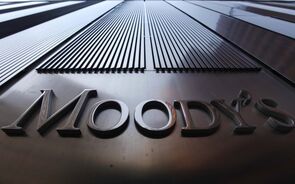Fleckenstein: Secular Bear Markets Humble Bears, Bulls Alike
1 Mensagem
|Página 1 de 1
Fleckenstein: Secular Bear Markets Humble Bears, Bulls Alike
Aqui fica um interessante artigo do Fleckenstein, um dos ursos (ele próprio se considera um "permabear") que adoro ler pela sua coerência e objectividade nas análises.
"Secular Bear Markets Humble Bears, Bulls Alike"
By Bill Fleckenstein
Special to RealMoney.com
08/19/2003 05:45 PM EDT
"SOX Gets High at Micron Brewery: The overnight markets were basically a yawn, with the exception of Japan's 1.5% gain. As we readied for business, the futures were higher, and the dollar was soaring against the euro. I'm sure the bulls were envisioning a bunch more upside, but that was not exactly how the day played out. A slightly disappointing Michigan confidence number precipitated a bit of a selling squall (why anyone reacts to the small changes in these statistics is beyond me), though the mighty, mighty SOX dodged the red elsewhere on the tape. That index caught a lift for 1% on the wings of the flying pig, Micron Technology, as folks continue to chase the nonsensical idea that DRAM prices will rise prospectively.
After the head fake to the downside on the confidence survey, the market ran back to the highs, trying a few times to punch through there. But in essence, the open and the high of the day were the same, for all intents and purposes, though the Nasdaq did manage to get marginally higher. Over the course of the day, even though the SOX tacked on a couple more percent, housing stocks ended up the place to be today, many of them up 4% to 5% as short-covering spread to that group. To give the bulls their due, they succeeded yet again in closing the market basically on the high tick. I'm sure they're anticipating more upside tomorrow, though after having closed up seven days in a row, the Nasdaq may be nearing the end of this current run.
The Oracle of Euro: Away from stocks, the interesting action continued. In the early going, the euro was down about 1%. My antennae were up to see if its apparent intent to plunge through what appeared to be a "triple" bottom was just a head fake. And in fact, the euro soon halved its losses, before closing flat. (I am focused on this, for signs that the dollar rally is exhausted, which would set the stage for a renewed plunge.) The metals, meanwhile, were initially weaker on the back of the euro's early decline, but they lost no time turning green, with silver closing up 1.5%, followed by gold, which closed up 1%. Fixed income was quite firm, with the long bond being disproportionately higher, up over 1.5 points.
Turning back to the stock market, and as regular readers know, I have spent a lot of time over the years discussing the mania and its long-lived ramifications. My purpose has been to provide a voice not heard in the popular press or in the commentary of most other "market observers." They have been content to focus either on minutiae or the near term, rarely contemplating the present environment through the prism of what's happened in the last 10 or 20 years. Today, I'd like to share a like-minded voice, that of Susan Berge, whose excellent Berge Letter yesterday illuminated the differences between the 1982-2000 secular bull market and our current secular bear market.
The Birds, the Bees, the Secular Bear Rallies: A prefatory word or two: I think some people have not paid enough attention to the difference between a cyclical (shorter-term) move and a secular (longer-term) move. If we are in a secular bear market, as I believe, there will be rallies like the one that we have had, but they will just be rallies. To repeat what I have said here in the past, "long-term investors" should generally not expect to just sit on stocks and get bailed out for their patience. "Long term" may wind up being six to nine months, though if we could get stocks cheap enough (which is not the case today), a rally of some longer duration might be possible. In any case, without further ado, here are Susan's thoughts, with an important message for both bulls and bears:
"During the 1982-2000 secular bull market, there were two declines of 20% or more. The first, in 1987, lasted two months in the DJIA, four months in the S&P 500. The second, in 1990, lasted three months, from July to October. By contrast, the average duration of bear markets within the 1966-1982 secular downtrend was 16-17 months. Given that secular trends usually last about 16-17 years, we are going to have to adjust to an environment very different from what we got used to in the 1980s and 1990s. Instant gratification is likely to be rare, for either bulls or bears. When we get into periods like the last few months, trying to make money on the long side is like pulling teeth. It is equally frustrating for the bears, as the market conforms to expectation by failing to go up, but disappoints by failing to go down.
"When 20%-plus declines are over within a matter of a few months, bulls who failed to sidestep the decline are usually able to recoup their losses within several months after the market turns up again (unless they were hit with margin calls). In a secular bear market, the attempt to 'get even' with the market after suffering substantial losses is usually very difficult, if not impossible. This is the psychological hook that keeps traders trying to recapture the glories of the period when making money was so much easier. Because it is more difficult, the victory is sweeter on those rare occasions when it does occur, and this too is part of what keeps people in stocks long after the point when they should have gotten out of harm's way. Random, inconsistent reinforcement tends to be more effective in motivating repeat behavior than reliable, consistent reinforcement. This is why it often takes so long in a bear market to get to capitulation.
"We are likely to be in this secular bear market for many more years to come. In our opinion, the market is currently in the area of a distribution top, and the next significant move in stock prices is likely to be on the downside. We expect to see little or no net upside progress beyond the closing highs recorded in June and July before a decline begins. At the present time, we believe the pending decline will likely be 20% to 30% or more across the board, but if the market's technical condition begins to improve more rapidly than we currently expect, we will alter our downside expectations accordingly."
Wheezing to the Upside: It appears to me that we are continuing to make a top in the market. The rally basically ran out of gas in late June. I know the Dow and Nasdaq have reached minor new highs, and likewise a couple of subindices, but the progress looks very labored to me. It's fairly predictable that folks would try to party during the thick of the no-news period. Also, the bulls have enjoyed the headwind at their back, with a rallying dollar and stock market feeding on each other to the upside.
But I think that sometime in the not-too-distant future, the dollar is going to come under pressure once again. I don't expect the stock market to see any meaningful gains from these levels, and I believe that the next big move will be on the downside. I myself have not done too much about this, in terms of shorting, as it still seems rather futile, nor have I bought too many more puts (though I did add to my Intel, simply because nothing has worked thus far. As Susan has pointed out, it's been frustrating for the bears, even those of us who haven't been very exposed, and I'm sure some of the bulls are pretty frustrated as well. "
(in www.realmoney.com)
"Secular Bear Markets Humble Bears, Bulls Alike"
By Bill Fleckenstein
Special to RealMoney.com
08/19/2003 05:45 PM EDT
"SOX Gets High at Micron Brewery: The overnight markets were basically a yawn, with the exception of Japan's 1.5% gain. As we readied for business, the futures were higher, and the dollar was soaring against the euro. I'm sure the bulls were envisioning a bunch more upside, but that was not exactly how the day played out. A slightly disappointing Michigan confidence number precipitated a bit of a selling squall (why anyone reacts to the small changes in these statistics is beyond me), though the mighty, mighty SOX dodged the red elsewhere on the tape. That index caught a lift for 1% on the wings of the flying pig, Micron Technology, as folks continue to chase the nonsensical idea that DRAM prices will rise prospectively.
After the head fake to the downside on the confidence survey, the market ran back to the highs, trying a few times to punch through there. But in essence, the open and the high of the day were the same, for all intents and purposes, though the Nasdaq did manage to get marginally higher. Over the course of the day, even though the SOX tacked on a couple more percent, housing stocks ended up the place to be today, many of them up 4% to 5% as short-covering spread to that group. To give the bulls their due, they succeeded yet again in closing the market basically on the high tick. I'm sure they're anticipating more upside tomorrow, though after having closed up seven days in a row, the Nasdaq may be nearing the end of this current run.
The Oracle of Euro: Away from stocks, the interesting action continued. In the early going, the euro was down about 1%. My antennae were up to see if its apparent intent to plunge through what appeared to be a "triple" bottom was just a head fake. And in fact, the euro soon halved its losses, before closing flat. (I am focused on this, for signs that the dollar rally is exhausted, which would set the stage for a renewed plunge.) The metals, meanwhile, were initially weaker on the back of the euro's early decline, but they lost no time turning green, with silver closing up 1.5%, followed by gold, which closed up 1%. Fixed income was quite firm, with the long bond being disproportionately higher, up over 1.5 points.
Turning back to the stock market, and as regular readers know, I have spent a lot of time over the years discussing the mania and its long-lived ramifications. My purpose has been to provide a voice not heard in the popular press or in the commentary of most other "market observers." They have been content to focus either on minutiae or the near term, rarely contemplating the present environment through the prism of what's happened in the last 10 or 20 years. Today, I'd like to share a like-minded voice, that of Susan Berge, whose excellent Berge Letter yesterday illuminated the differences between the 1982-2000 secular bull market and our current secular bear market.
The Birds, the Bees, the Secular Bear Rallies: A prefatory word or two: I think some people have not paid enough attention to the difference between a cyclical (shorter-term) move and a secular (longer-term) move. If we are in a secular bear market, as I believe, there will be rallies like the one that we have had, but they will just be rallies. To repeat what I have said here in the past, "long-term investors" should generally not expect to just sit on stocks and get bailed out for their patience. "Long term" may wind up being six to nine months, though if we could get stocks cheap enough (which is not the case today), a rally of some longer duration might be possible. In any case, without further ado, here are Susan's thoughts, with an important message for both bulls and bears:
"During the 1982-2000 secular bull market, there were two declines of 20% or more. The first, in 1987, lasted two months in the DJIA, four months in the S&P 500. The second, in 1990, lasted three months, from July to October. By contrast, the average duration of bear markets within the 1966-1982 secular downtrend was 16-17 months. Given that secular trends usually last about 16-17 years, we are going to have to adjust to an environment very different from what we got used to in the 1980s and 1990s. Instant gratification is likely to be rare, for either bulls or bears. When we get into periods like the last few months, trying to make money on the long side is like pulling teeth. It is equally frustrating for the bears, as the market conforms to expectation by failing to go up, but disappoints by failing to go down.
"When 20%-plus declines are over within a matter of a few months, bulls who failed to sidestep the decline are usually able to recoup their losses within several months after the market turns up again (unless they were hit with margin calls). In a secular bear market, the attempt to 'get even' with the market after suffering substantial losses is usually very difficult, if not impossible. This is the psychological hook that keeps traders trying to recapture the glories of the period when making money was so much easier. Because it is more difficult, the victory is sweeter on those rare occasions when it does occur, and this too is part of what keeps people in stocks long after the point when they should have gotten out of harm's way. Random, inconsistent reinforcement tends to be more effective in motivating repeat behavior than reliable, consistent reinforcement. This is why it often takes so long in a bear market to get to capitulation.
"We are likely to be in this secular bear market for many more years to come. In our opinion, the market is currently in the area of a distribution top, and the next significant move in stock prices is likely to be on the downside. We expect to see little or no net upside progress beyond the closing highs recorded in June and July before a decline begins. At the present time, we believe the pending decline will likely be 20% to 30% or more across the board, but if the market's technical condition begins to improve more rapidly than we currently expect, we will alter our downside expectations accordingly."
Wheezing to the Upside: It appears to me that we are continuing to make a top in the market. The rally basically ran out of gas in late June. I know the Dow and Nasdaq have reached minor new highs, and likewise a couple of subindices, but the progress looks very labored to me. It's fairly predictable that folks would try to party during the thick of the no-news period. Also, the bulls have enjoyed the headwind at their back, with a rallying dollar and stock market feeding on each other to the upside.
But I think that sometime in the not-too-distant future, the dollar is going to come under pressure once again. I don't expect the stock market to see any meaningful gains from these levels, and I believe that the next big move will be on the downside. I myself have not done too much about this, in terms of shorting, as it still seems rather futile, nor have I bought too many more puts (though I did add to my Intel, simply because nothing has worked thus far. As Susan has pointed out, it's been frustrating for the bears, even those of us who haven't been very exposed, and I'm sure some of the bulls are pretty frustrated as well. "
(in www.realmoney.com)
1 Mensagem
|Página 1 de 1
Quem está ligado:
Utilizadores a ver este Fórum: Bing [Bot], Ferreiratrade, Google [Bot], Google Adsense [Bot], m-m, navaldoc, ramirogaspar24 e 145 visitantes



